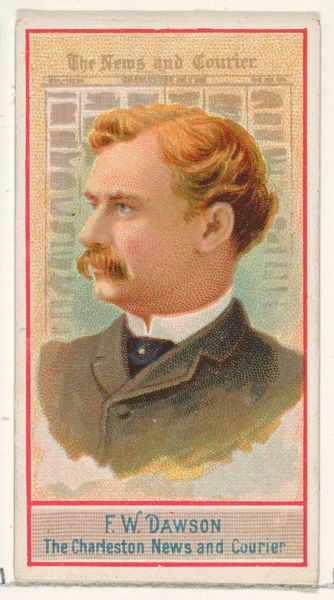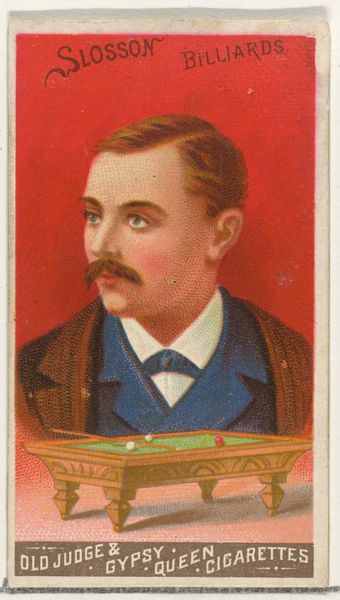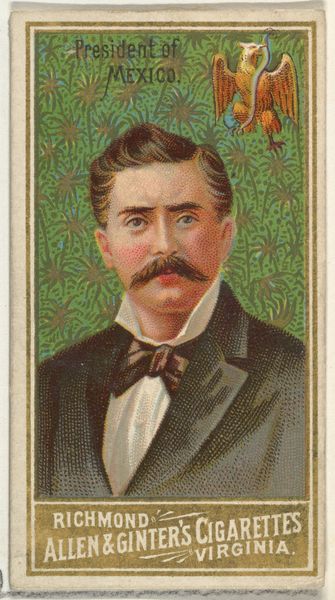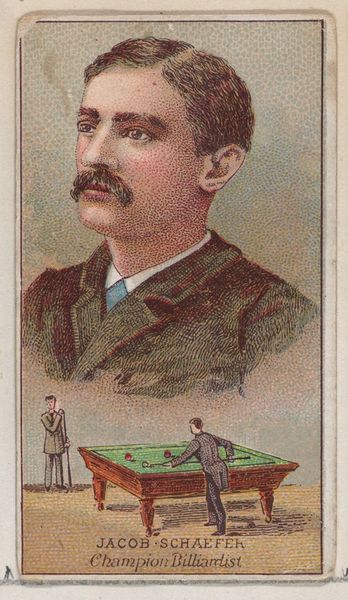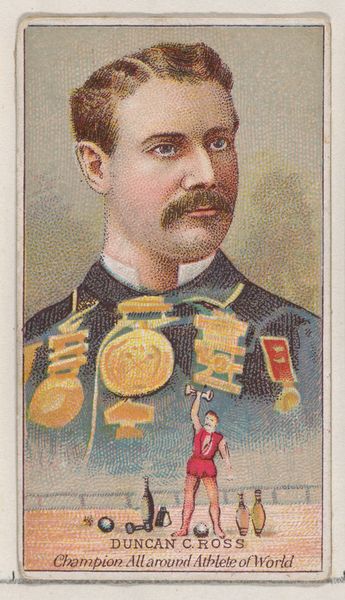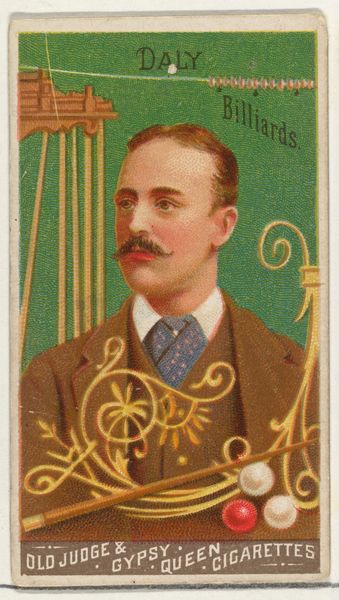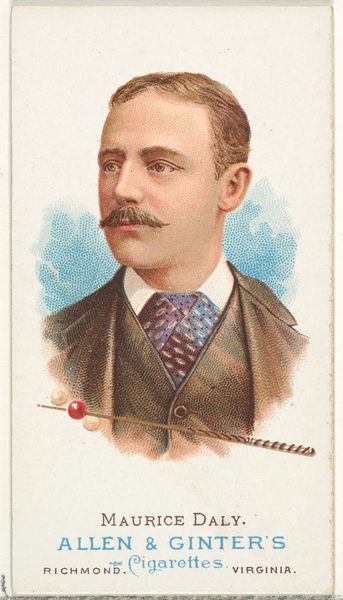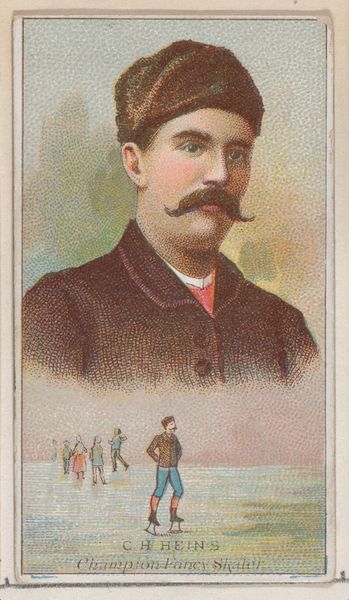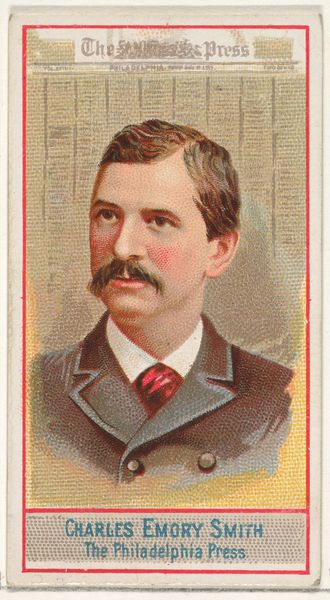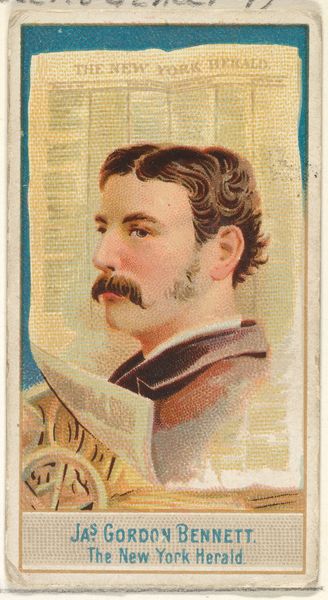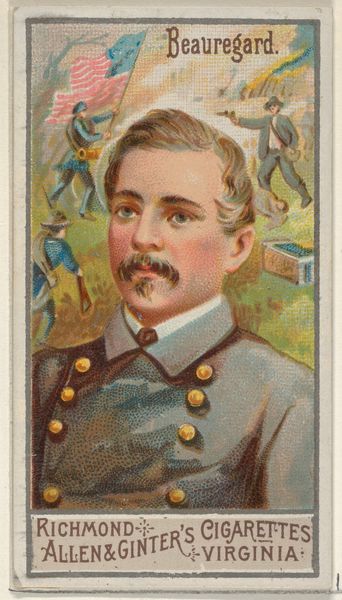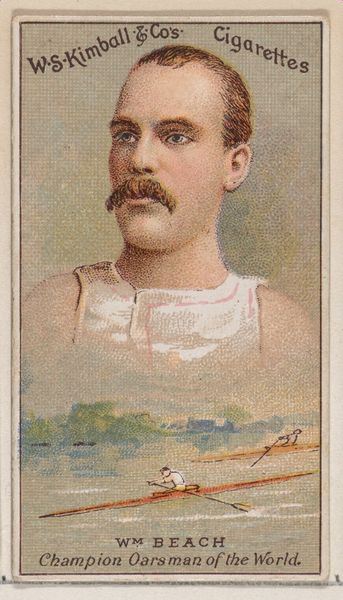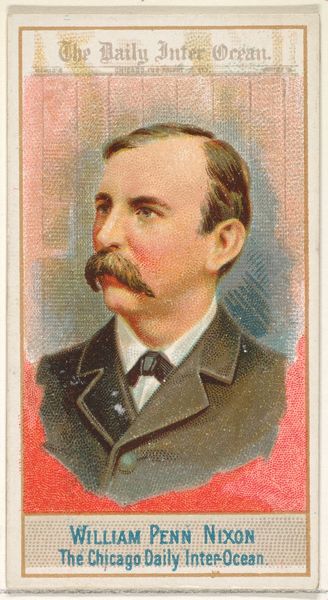
Jacob Schaefer, Jr., Billiards, from the Goodwin Champion series for Old Judge and Gypsy Queen Cigarettes 1888
0:00
0:00
drawing, lithograph, print
#
portrait
#
drawing
#
lithograph
# print
#
caricature
Dimensions: sheet: 2 5/8 x 1 1/2 in. (6.6 x 3.8 cm)
Copyright: Public Domain
Editor: This is a lithograph from 1888 by Goodwin & Company, part of the "Goodwin Champion" series of trading cards for "Old Judge and Gypsy Queen Cigarettes", depicting Jacob Schaefer, Jr., a billiards champion. It's such a peculiar image – the detail is fascinating, and I'm curious how to unpack its visual elements. What's your perspective? Curator: From a formalist approach, the interplay between line and color is key. Notice how the artist employs a smooth, continuous line to define Schaefer’s profile, set against the contrasting vibrant red oval and the subdued background. The use of primary colors to denote rank within the billiards championship is intriguing. It is interesting to examine how it signifies prestige and quality. The print’s symmetrical arrangement within its rectangular frame and the strategic placement of billiard balls work well. Editor: I see that. So, would you say the composition is what defines the portraiture here? Is it about form and color first? Curator: Precisely. Focus on the artist's choices regarding visual structure: consider the balance, rhythm, and repetition created by color and objects. How do the shapes interact? Where does your eye go first, and why? What emotions do these compositional elements evoke, disregarding the subject’s identity? Editor: I understand now! Looking purely at the aesthetic qualities of the card rather than the historical context or who the player was helps bring out new information from its artistic structure. Curator: Exactly! Thinking critically about the image, its physical presence, materials, colors, and visual relations—without considering historical implications—reveals a fascinating, self-contained aesthetic. I'm so glad we examined this today. Editor: Me too, thank you for your insight! I am going to use this approach on the next piece we explore today.
Comments
No comments
Be the first to comment and join the conversation on the ultimate creative platform.
